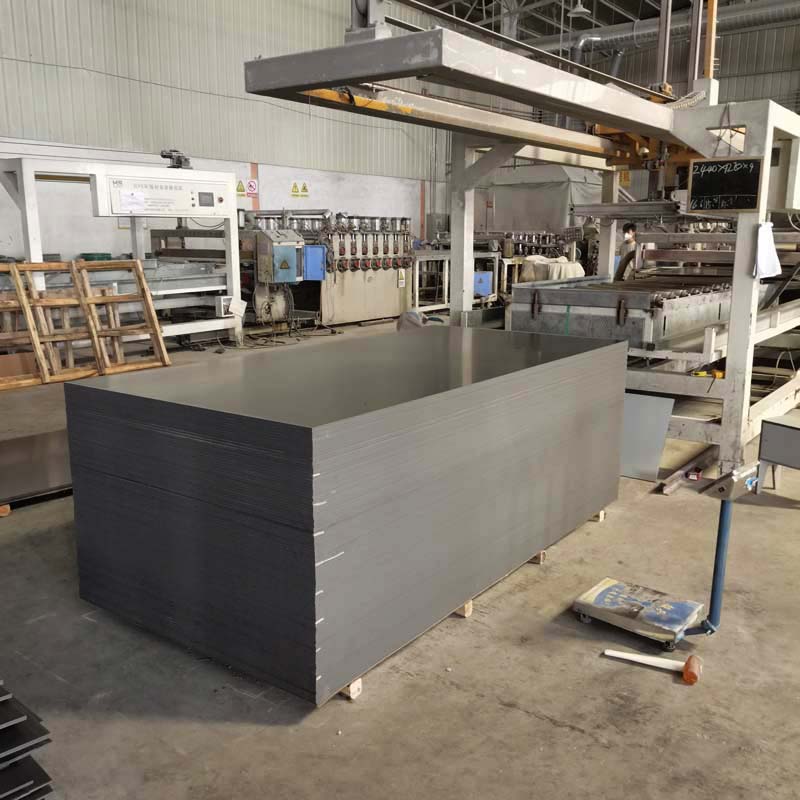Cutting PVC sheet can be a daunting task, especially if you are not using the right tools and techniques. PVC sheets are durable, lightweight, and easy to handle, making them an excellent material for various applications. However, cutting them to size requires precision and care to avoid damaging the sheet or injuring yourself. In this article, we will discuss the steps involved in cutting PVC sheets and the tools required to achieve a clean and precise cut.
Step 1: Measure and Mark the PVC Sheet
Before cutting the PVC sheet, you need to measure and mark the area you want to cut. Use a measuring tape and a pencil to mark the cutting line accurately. Ensure that the line is straight, and the edges are clean. You can also use a straight edge or a ruler to make the line more precise.
Step 2: Choose the Right Tool
To cut PVC sheets, you need the right tool for the job. There are various tools you can use to cut PVC sheets, depending on the thickness and size of the sheet. Below are the tools you can choose from:
Hand Saw – For Thin PVC Sheets
If you are cutting thin PVC sheets, a hand saw can be an excellent tool for the job. Use a fine tooth saw blade to ensure a clean and precise cut. Make sure the blade is sharp and in good condition before cutting the sheet.
Jigsaw – For Medium Thickness PVC Sheets
If you are cutting medium thickness PVC sheets, a jigsaw can be an excellent tool for the job. Use a fine tooth jigsaw blade to ensure a clean and precise cut. Make sure the blade is sharp and in good condition before cutting the sheet.
Circular Saw – For Thick PVC Sheets
If you are cutting thick PVC sheets, a circular saw can be an excellent tool for the job. Use a fine tooth circular saw blade to ensure a clean and precise cut. Make sure the blade is sharp and in good condition before cutting the sheet.
Step 3: Cut the PVC Sheet
Once you have measured, marked, and chosen the right tool, it\’s time to cut the PVC sheet. Below are the steps involved in cutting the PVC sheet:
1. Place the PVC sheet on a flat and stable surface.
2. Make sure the sheet is securely clamped or held in place to prevent it from moving during the cutting process.
3. Wear safety goggles and a dust mask to protect your eyes and lungs from PVC dust.
4. Turn on the saw and start cutting along the marked line.
5. Use a steady and even pressure to guide the saw through the sheet.
6. Avoid forcing the saw through the sheet to prevent it from bending or breaking.
7. Once you have cut through the sheet, remove the clamps, and gently separate the cut pieces.
8. Use sandpaper or a file to smoothen the cut edges and remove any rough spots.

Step 4: Clean Up
After cutting the PVC sheet, it\’s essential to clean up the area and dispose of any sawdust or debris. Use a broom or a vacuum cleaner to remove any PVC dust or debris from the cutting area. Store your tools safely and properly to avoid any accidents.
Conclusion
Cutting PVC sheets requires patience, precision, and the right tools. By following the above steps and using the right tool for the job, you can achieve a clean and precise cut. Always wear protective gear and be careful when cutting PVC sheets to avoid any accidents. If you are not confident in your cutting abilities, seek professional help.
Previous: PVC Building Formwork: A Sustainable Alternative for Construction
Next: PVC Building Formwork: A Revolutionary Solution for Construction

Wood veneer (wbt290)
product description: It is mainly composed of two parts: substrate and surface film. The main component of the substrate is polymer material, the surface film is divided into PVC film and PP film, and the surface is covered with wood grain. When maki...

Carbon crystal plate (wbt670)
product description: What is the material of the carbon crystal plate? The carbon crystal plate is made of natural bamboo powder, calcium powder, new polymer composite material, carbon crystal powder and PVC powder. The raw materials do not contain f...

PVC partition board (wbt540)
1. Product description PVC partition board, also known as foamed polyvinyl chloride board, has the characteristics of moisture resistance, heat preservation and corrosion resistance, light texture but high hardness, which is not easy to scratch and a...

PVC foam board (wbt04)
1.product description PVC foam board is also called Chevron board or Andy board, its chemical composition is polyvinyl chloride, so it is also called foamed polyvinyl chloride board. It is widely used in passenger cars, train car roofs, box core laye...